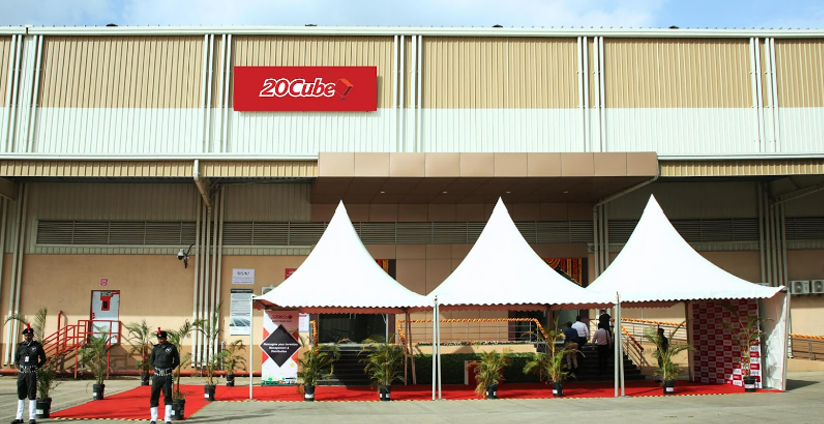The Rise of Grade A Warehouses: Meeting the Demands of Modern Logistics
- September 10, 2024
- Blog
 Grade A warehouses are rapidly evolving, driven by the integration of advanced technologies and adherence to stringent industry standards. This transformation is largely influenced by the rise of multi-client warehouses, the round-the-clock availability of 3PL and 4PL service providers, and the growing need for customized storage solutions. These warehouses are self-sustaining, offering intelligent and efficient storage options tailored to the diverse needs of businesses across various industries. The demand for Grade A warehouses has surged, particularly due to the explosive growth of the e-commerce industry, leading to significant investments in their construction near major industrial hubs worldwide.
Grade A warehouses are rapidly evolving, driven by the integration of advanced technologies and adherence to stringent industry standards. This transformation is largely influenced by the rise of multi-client warehouses, the round-the-clock availability of 3PL and 4PL service providers, and the growing need for customized storage solutions. These warehouses are self-sustaining, offering intelligent and efficient storage options tailored to the diverse needs of businesses across various industries. The demand for Grade A warehouses has surged, particularly due to the explosive growth of the e-commerce industry, leading to significant investments in their construction near major industrial hubs worldwide.
Decoding Grade ‘A’ Warehouse
These warehouses have best-in-class building specifications. While there are no universally accepted industry standards for classifying Grade A warehouses, certain features and specifications distinguish them from the rest. Some of these key features include:
Building specs and materials
The Grade A Warehouses are constructed using non-combustible or fireproof raw materials including plaster, gypsum and other materials. As the warehouse might store inventories of varied industry needs, hence it has ceilings of at least thirteen meters high, support columns at least twelve meters apart and spans of at least twenty-four meters. Besides that, there is at least one automatic docking gate at every 500 sq. mt of interior space and a good amount of outdoor space to navigate large trucks and for parking purposes.
Advanced Facilities
These warehouses offer an array of advanced features, including climate control, fire safety systems, security monitoring and alarms, high-speed internet, and electrical substations. Apart from these, automation plays a pivotal role with MHE (Material handling equipment) designed to reach the highest shelves and composite panes for improved operational efficiency. These smart warehouses are designed to make your supply chain efficient.
Strategic Location
Grade A Warehouses are strategically located, ensuring proximity to major transportation routes, airports, seaports and distribution centers. This enables quick and cost-efficient movement of consignment, minimizes lead time and optimizes supply chain efficiency.
The growing demand for Grade A Inventory facility
Today many manufacturers are investing in Grade A warehousing for storage solutions due to their international standards and multiple advantages. These warehouses have the advantage of increased height, advanced flooring systems, varied MHEs, higher floor load capacity, clean ambience and safety protocol in place. Besides that, they also offer noteworthy features like visitor parking, multiple docking stations, heavy vehicle maneuvering and multi-modal connectivity. The shift towards sustainability is also evident, with warehouses adopting greener practices like energy-efficient technologies from solar panels, and rainwater harvesting to HVAC systems with a focus on reducing carbon emissions.
Key benefits of Grade A warehouses that have been driving their demand include:
Operational efficiency: These warehouses offer advanced infrastructure that enhances the management of traffic and cargo movement, supporting the implementation of cutting-edge material handling equipment (MHE) to maximize productivity. With increased cargo loading and unloading docks, as well as strategically located entry and exit points, the movement to and from the warehouse is swift and efficient.
Complete security: Grade A warehouses are equipped with compliant safety and security standards, including advanced surveillance and firefighting systems, tech-enabled 24×7 monitoring, and excellent SOPs and resources in place for crisis management.
Scalability and agility: These facilities are designed to adopt short or long-term scaling needs offering flexibility and customization to accommodate the growing needs of the businesses.
Today, businesses are evolving rapidly in response to regulatory requirements and customer preferences, leading to corresponding changes in warehousing operations. Institutional developers are creating top-tier facilities that boost operational efficiency, enhance customer experiences, and incorporate sustainable practices. The demand for Grade-A warehousing spaces is driven by factors such as scalability aligned with future growth plans, technology-enabled operations, and green logistics. 20Cube Logistics, a digital freight forwarding company with a presence across the globe provides state-of-the-art compliant and sustainable facilities, catering to a range of industries with customized solutions to provide benefits to customers’ businesses.



